How the news industry has reacted to the invasion of Ukraine and how you can help
In the face of a crisis, newspapers have a duty to report accurate, fact-based news. Beyond this, many also go further to ensure their news can be seen by as many people as possible and so that they can have a direct impact on improving situations.
Funding independent media in Ukraine
The Kyiv Independent was founded in November last year by over 30 journalists who were abruptly fired from the Kyiv Post for defending editorial independence. Jakub Parusinski was part of the effort of setting up the new English-Language media outlet. We had the honour of hearing from Jakub at last year’s Digital Growth Summit and you can read his insights on media mavericks.
Last month, Jakub and the team at The Fix launched a fund-raising campaign to support the efforts of independent Ukrainian media outlets, as well as promoting direct donations to the Kyiv Independent. The campaign has seen remarkable success and been recognised by media outlets worldwide as well as former US President Barack Obama.
As of 10th March, their campaign had received over £842,000, excluding the €1.3 million donated directly to the Kyiv Independent. Donations have come from publishers across the world including Axel Springer and Bonnier. Sifted have committed to donate 50% of their reader revenue to the campaign. At Twipe, we have started a campaign to support the initiative with donations from the Twipe team being matched by the business. £1500 has been gathered so far.
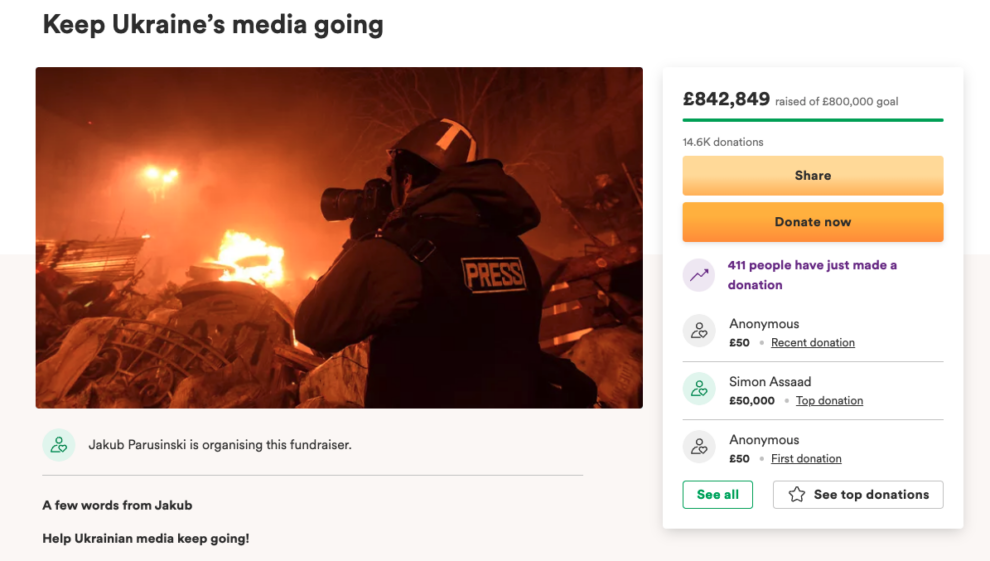
Money from the campaign is being used for multiple purposes. These include providing emergency supplies and equipment for news teams and providing funds for relocation so teams can continue to produce their news in a safe and secure environment. To support their great work, don’t hesitate to donate.
Nordic publishing giant Schibsted announced that they had donated 1 million Norwegian Krone to support independent Ukrainian news media in cooperation with WAN-IFRA and the International Press Institute. The publisher explained that this effort was vital to fulfil their ambition “to empower people in their daily lives and work towards a society based on trust and transparency, including the European and global communities”.
Providing free access to the news
Giving free access to news is a measure we saw in light of the COVID-19 pandemic. The media’s response to Russia’s invasion of Ukraine has been no different.
Danish Publisher Politiken have provided non-subscribers with the chance to receive 14-days free access to all formats of their journalism. This includes access to their ePaper, podcasts and newsletters, all so that Danes can stay up to date with events in Ukraine. Explaining why, the publisher stated: “Of course, we are following developments in Ukraine minute by minute – and you must have the opportunity to do the same.”
In their edition on 10th March, Politiken announced that they, along with fellow Nordic Publishers Helsingin Sanomat and Dagens Nyheter have launched a joint initiative to publish articles in Russian. The aim of their initiative is to give people in Russia access to independent and reliable information about Ukraine.
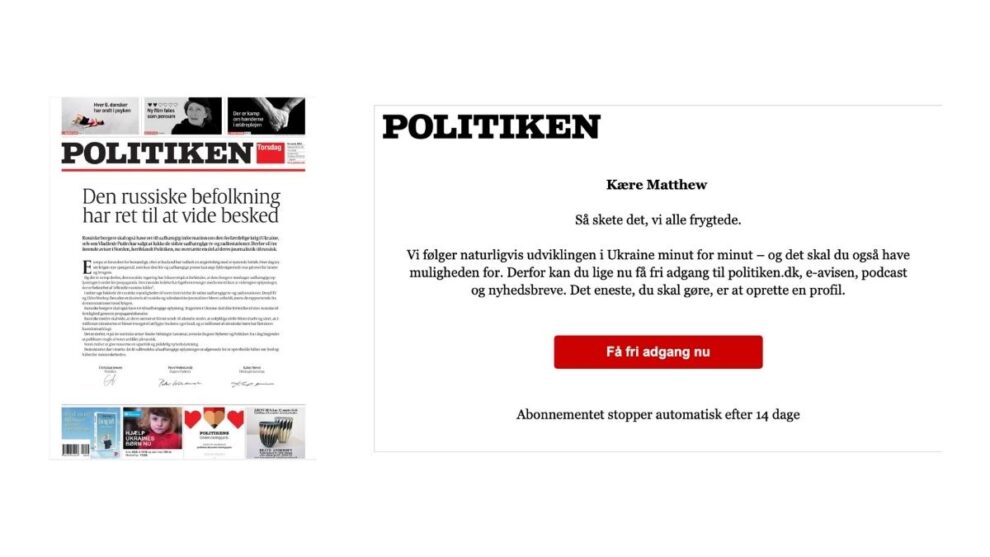
In the UK, the Financial Times have made their key Ukraine coverage free of charge for readers. The publisher has a notable history of providing free access to their content. In November 2021, the publisher made their COP26 stories free to access.

Pop-up podcasts for audio lovers
As they did with the US election and the COVID-19 Pandemic, the BBC launched a special version of their “Newscast” podcast. “Ukrainecast” provides listeners with a daily edition update on the news and events in Ukraine. What is particularly impressive is that the podcast has been running since 24th February, the day that Russia invaded Ukraine.
Hosted by broadcaster Victoria Derbyshire, BBC Newsnight International Editor and former Ukraine correspondent Gabriel Gatehouse and Russian Editor of BBC Monitoring Vitaly Shevchenko, the podcast is a great place to get accurate information.
In the US, NPR have also launched their own podcast “State of Ukraine”. Their podcast features several new episodes a day with reports from journalists on the ground alongside conversations with officials and other experts.
Factchecking brought to the next level
During times of crisis, fake and old news is easily circulated. Let’s not forget that during the COVID-19 pandemic, over 100 posts about vaccine misinformation received 20 million views on TikTok. In this current conflict, the problem of fake news is rife thanks to state-controlled media and censorship in Russia. Therefore, factchecking has been a crucial tool.
Newsrooms, such as those at The Washington Post, have used visual forensics teams to analyse the reliability of content before choosing whether or not to publish it. Unlike usual newsroom investigations that are built around private data, the visual forensics team look at several aspects. These include geolocation, high-quality satellite images, private data and using open-source materials. Here is a great thread to see the process undertaken by the team.
Poynter’s International Fact-Checking Network have also been busy since the start of the invasion. Their collaboration of around 120 fact-checking organisations have started the database ukrainefacts.org. The database, developed by Maldita.es publishes fact checks on the mis/disinformation being circulated about Ukraine. This is a great collaborative effort and one which helps to stem the spread of inaccurate news across the globe.
Editorial changes that can make a big impact
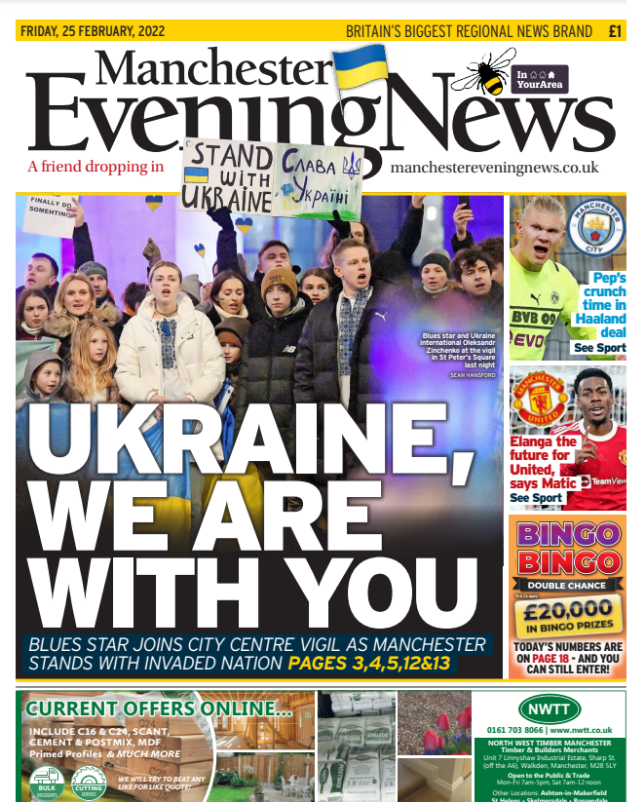
Manchester Evening News
- The UK regional paper Manchester Evening News have taken several powerful measures.
- They organised a vigil in the city centre to show support for Ukraine.
- The publisher added the Ukrainian flag to their edition.
- On Twitter, MEN changed their profile picture to carry the colours of the Ukrainian flag.
Bild
- Bild chose to censor content featuring Russian adverts or promotion.
- In this example, the publisher chose to replace
the “Gazprom” adverts on the shirts of the FC Schalke players. - Instead, the publisher printed the message “Freedom for Ukraine”.

“Writing Kyiv is a very small contribution to the recognition of the independence of Ukrainians. But it is an expression of a great belief that every word counts.”
Jyllands Posten Editors
Jyllands Posten
- Danish newspaper Jyllands Posten have made an editorial change in their reporting.
- Rather than using the name “Kiev” in their reporting, the publisher now uses the Ukrainian spelling “Kyiv”.
- The publisher explained that this was because the name “Kiev” has long been criticised by the Ukrainian’s since it derives from the Russian language.
Postimees
- Estonian newspaper Postimees used their front page to show their support for Ukraine on 23rd February.
- The publisher chose to change the title of their edition to the colours of the Ukrainian flag.
- They also added a picture of a Ukrainian protestor.
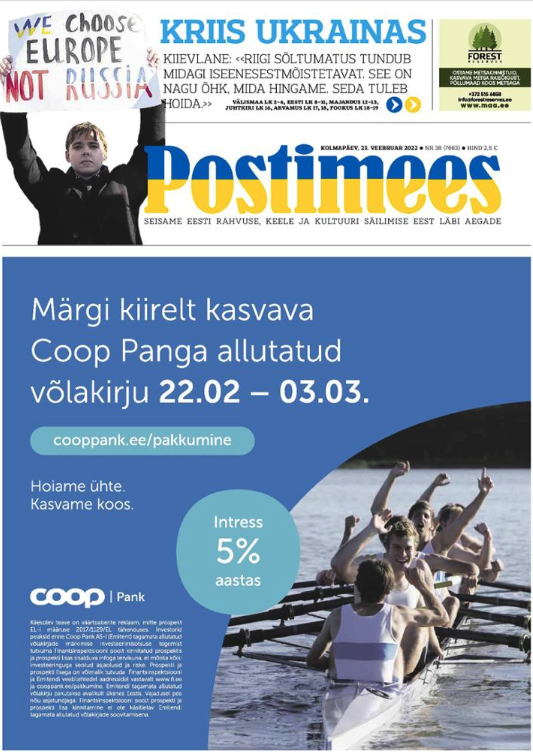
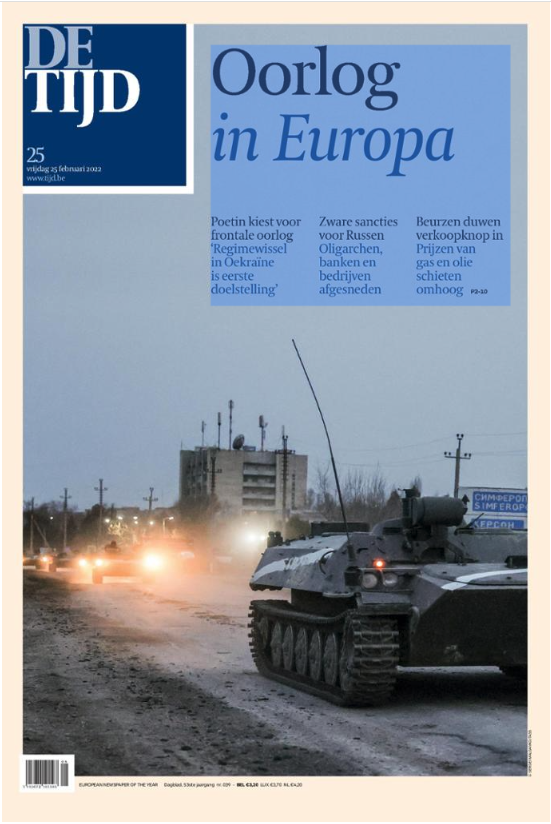
De Tijd
- Belgian financial newspaper De Tijd shifted from their traditional
front page to highlight the outbreak of war in Ukraine. - The publisher chose to publish a special front page showing the Russian invasion of Ukraine with the headline “War in Europe”.
Daily Mirror
- In the UK, the Daily Mirror printed a 2-page spread of the Ukrainian flag so readers could show their support for Ukraine.
- The publisher has also added the Ukrainian flag to the logo on their website.

On 3rd March, Swedish newspapers participated in a joint appeal in support of free media in Ukraine and Russia. This appeal was published in the day’s edition not only in Swedish, but also in Russian and Ukrainian to ensure maximum reach. You can read the appeal (in Swedish) here.
To find more ways your outlet can help, read The Fix’s piece on 5 ways news organisations can help Ukrainian media.
Other Blog Posts

Stay on top of the game
Join our community of industry leaders. Get insights, best practices, case studies, and access to our events.
"(Required)" indicates required fields

